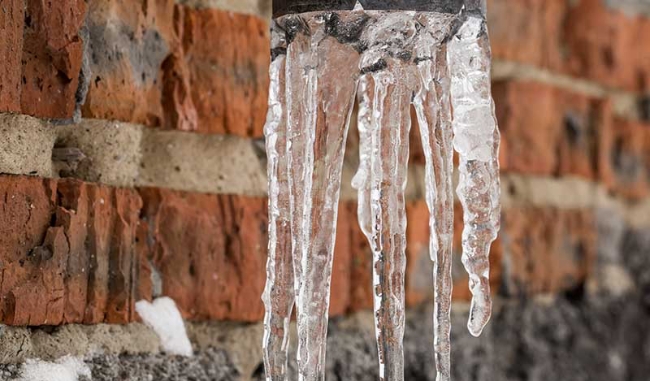Important Advice to Avoid Frozen Plumbing in Cold Weather: Specialist Insights
Important Advice to Avoid Frozen Plumbing in Cold Weather: Specialist Insights
Blog Article
Were you on the lookout for critical information involving How To Avoid Freezing Pipes?

Cold weather can wreak havoc on your pipes, particularly by freezing pipelines. Below's how to prevent it from occurring and what to do if it does.
Intro
As temperatures decline, the danger of frozen pipes increases, potentially bring about pricey repairs and water damage. Recognizing just how to avoid frozen pipelines is critical for property owners in cool climates.
Comprehending Icy Pipelines
What causes pipelines to freeze?
Pipes freeze when subjected to temperatures listed below 32 ° F (0 ° C) for expanded periods. As water inside the pipes ices up, it expands, putting pressure on the pipeline wall surfaces and potentially creating them to rupture.
Threats and damages
Icy pipes can bring about water disturbances, residential or commercial property damage, and costly repair services. Ruptured pipes can flooding homes and cause considerable architectural damage.
Indications of Frozen Pipeline
Recognizing icy pipes early can stop them from bursting.
How to identify icy pipelines
Seek reduced water flow from taps, uncommon odors or noises from pipes, and visible frost on subjected pipelines.
Avoidance Tips
Protecting susceptible pipes
Wrap pipelines in insulation sleeves or use warm tape to secure them from freezing temperatures. Concentrate on pipes in unheated or exterior areas of the home.
Home heating strategies
Keep interior areas effectively warmed, particularly areas with plumbing. Open cupboard doors to permit cozy air to circulate around pipelines under sinks.
Safeguarding Exterior Pipes
Yard tubes and outdoor taps
Disconnect and drain pipes yard hoses prior to winter months. Mount frost-proof spigots or cover outdoor taps with protected caps.
What to Do If Your Pipelines Freeze
Immediate actions to take
If you presume frozen pipelines, maintain faucets open up to ease pressure as the ice thaws. Utilize a hairdryer or towels taken in warm water to thaw pipes slowly.
Long-Term Solutions
Structural modifications
Think about rerouting pipes far from exterior walls or unheated locations. Add added insulation to attics, cellars, and crawl spaces.
Upgrading insulation
Purchase high-grade insulation for pipelines, attics, and wall surfaces. Proper insulation helps maintain constant temperature levels and minimizes the danger of icy pipes.
Final thought
Avoiding icy pipes requires proactive steps and quick feedbacks. By comprehending the reasons, indications, and safety nets, homeowners can shield their pipes throughout winter.
5 Ways to Prevent Frozen Pipes
Drain Outdoor Faucets and Disconnect Hoses
First, close the shut-off valve that controls the flow of water in the pipe to your outdoor faucet. Then, head outside to disconnect and drain your hose and open the outdoor faucet to allow the water to completely drain out of the line. Turn off the faucet when done. Finally, head back to the shut-off valve and drain the remaining water inside the pipe into a bucket or container. Additionally, if you have a home irrigation system, you should consider hiring an expert to clear the system of water each year.
Insulate Pipes
One of the best and most cost-effective methods for preventing frozen water pipes is to wrap your pipes with insulation. This is especially important for areas in your home that aren’t exposed to heat, such as an attic. We suggest using foam sleeves, which can typically be found at your local hardware store.
Keep Heat Running at 65
Your pipes are located inside your walls, and the temperature there is much colder than the rest of the house. To prevent your pipes from freezing, The Insurance Information Institute suggests that you keep your home heated to at least 65 degrees, even when traveling. You may want to invest in smart devices that can keep an eye on the temperature in your home while you’re away.
Leave Water Dripping
Moving water — even a small trickle — can prevent ice from forming inside your pipes. When freezing temps are imminent, start a drip of water from all faucets that serve exposed pipes. Leaving a few faucets running will also help relieve pressure inside the pipes and help prevent a rupture if the water inside freezes.
Open Cupboard Doors
Warm your kitchen and bathroom pipes by opening cupboards and vanities. You should also leave your interior doors ajar to help warm air circulate evenly throughout your home.
:strip_icc()/snow-outdoor-faucet-pipes-4af65d1e5e904fb1aa7bf74071fe5d89.jpg)
We had been made aware of that report on Winter Plumbing Precautions: Preventing Frozen Pipes from an acquaintance on a different website. If you enjoyed our post plz remember to share it. I thank you for reading our article about Winter Plumbing Precautions: Preventing Frozen Pipes.
Click Here Report this page